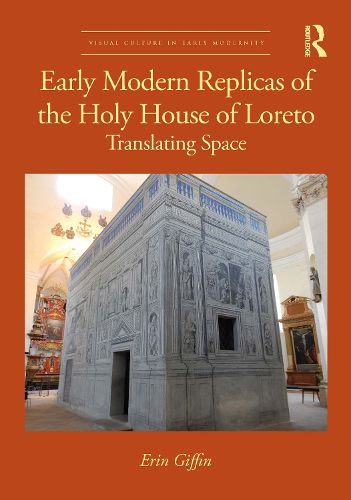Readings Newsletter
Become a Readings Member to make your shopping experience even easier.
Sign in or sign up for free!
You’re not far away from qualifying for FREE standard shipping within Australia
You’ve qualified for FREE standard shipping within Australia
The cart is loading…






This comprehensive and cross-cultural study examines three-dimensional structural replicas of the Santa Casa, or Holy House of the Virgin Mary, and related circulating visual and textual media.
Interdisciplinary in its design, the project engages with a broad spectrum of cultures and lay strata, redirecting early modern studies to prioritize anonymously produced Catholic cult objects and devotional memorabilia, disseminated largely between the fifteenth through early nineteenth centuries. By tracing the formation and evolution of Loretan iconography and cult space in two and three dimensions, this publication illuminates the spread of the popular structure as a sculptural cult object and its worship via replication. By combining art historical questions of materiality and form with broader anthropological and social history concerns regarding information production, dissemination, and reception, this book reveals how early modern Catholics capitalized on cult replicas.
This book will be of interest to scholars working in art history, architectural history, religious history, and early modern studies.
$9.00 standard shipping within Australia
FREE standard shipping within Australia for orders over $100.00
Express & International shipping calculated at checkout
This comprehensive and cross-cultural study examines three-dimensional structural replicas of the Santa Casa, or Holy House of the Virgin Mary, and related circulating visual and textual media.
Interdisciplinary in its design, the project engages with a broad spectrum of cultures and lay strata, redirecting early modern studies to prioritize anonymously produced Catholic cult objects and devotional memorabilia, disseminated largely between the fifteenth through early nineteenth centuries. By tracing the formation and evolution of Loretan iconography and cult space in two and three dimensions, this publication illuminates the spread of the popular structure as a sculptural cult object and its worship via replication. By combining art historical questions of materiality and form with broader anthropological and social history concerns regarding information production, dissemination, and reception, this book reveals how early modern Catholics capitalized on cult replicas.
This book will be of interest to scholars working in art history, architectural history, religious history, and early modern studies.